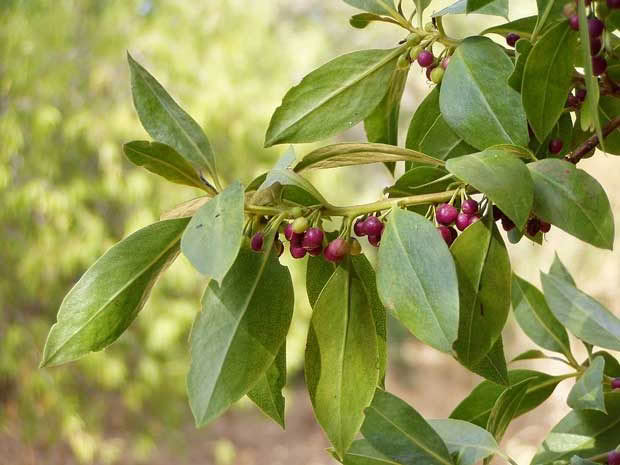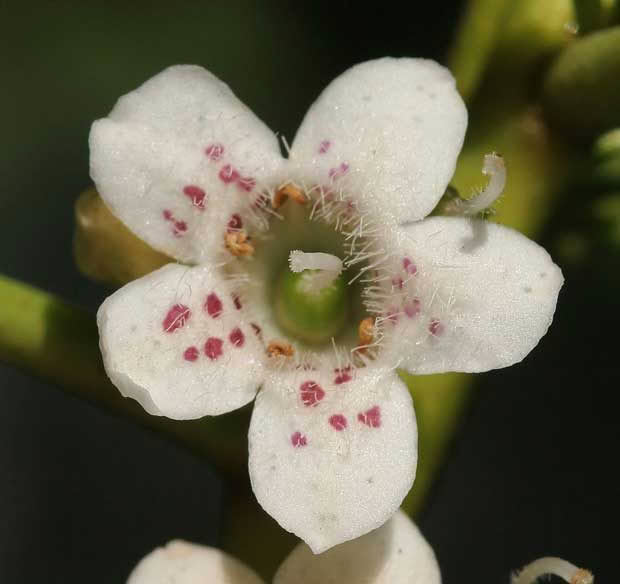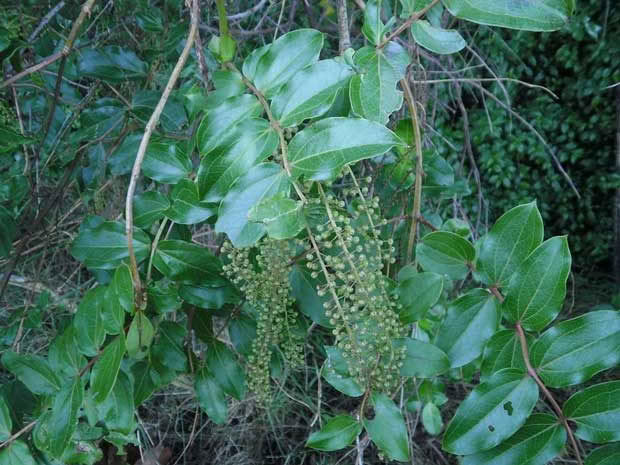2 natives that you don’t want to mess with

Ngaio, Myoporum laetum. Photo: Wikicommons/Júlio Reis
You may think of all natives as friendly plants, but two common ones have a deadly secret.
Words: Nadene Hall
NGAIO

Ngaio flower. Photo: Wikicommons/Avenue
Botanical name: Myoporum laetum
Status: deadly
Which parts are toxic: leaves are the most highly toxic, but bark, berries and stems will also poison anything that eats it.
About ngaio: shrub 5m x 3m, up to 10m, 4-10cm long leaves, bright green, shiny and sticky, white flowers with purple markings, pale-red-purple fruits
Found: mainly in coastal areas or lowland forests
Animals affected: cattle, sheep, goats, pigs, horses, alpaca, llamas
Symptoms: sensitivity to the sun (photosensitivity) especially around the head, skin teats and udder may swell, dry and peel off, severe stomach pain, loss of appetite, severe constipation (although there may be very dry, blood-stained faeces, jaundice, staggering, convulsions, sudden death.
Treatment: if caught early, symptoms of photosensitivity can be treated (shade, anti-inflammatories) but victims of this highly poisonous plant are often only found after death. Medication can help in some cases.
TUTU

Coriaria arborea, tutu, native plant of New Zealand. Photo: Wikicommons/Rudolph89
Botanical name: Coriaria
Status: all 10 species in NZ are very poisonous
Which parts are toxic: leaves, seeds and pollen but consider all parts toxic
About Tutu: species range from 50cm high shrub to straggly-looking tree up to 6m high, shiny green leaves and green flowers (September-March), long, hanging catkins, purple-black berries.
Found: in bush remnants, scrub, modified habitat from lowlands to mountains
Animals affected: all animals, and people
Symptoms: drooling, nausea, high state of nervousness/excitement, convulsions, exhaustion, death. The Lincoln Animal Health Laboratory* also report a “dummy” syndrome where sheep have been found standing still, reluctant to move and appearing to be blind with a rapid breath rate. These animals died within hours.
*Plant Poisoning in NZ, www.sciquest.org.nz
Treatment: medication can help in some cases
Which NZ native plant is the most toxic?
Tutu, which contains a poison called tutin which has powerful convulsant effects on animals and people.
Is it poisonous?
If you aren’t sure whether a plant or chemical is toxic and your animal (livestock, pet) has just eaten it, you are allowed to ring the National Poisons Centre free on 0800 POISON (0800 764 766). While their priority is the treatment of people, if they are not busy they are more than happy to help out with queries regarding animals.
When to call the vet
Immediately if you even suspect poisoning. Some livestock can be given supportive care, others will need to be euthanized.
Love this story? Subscribe now!
 This article first appeared in NZ Lifestyle Block Magazine.
This article first appeared in NZ Lifestyle Block Magazine.
